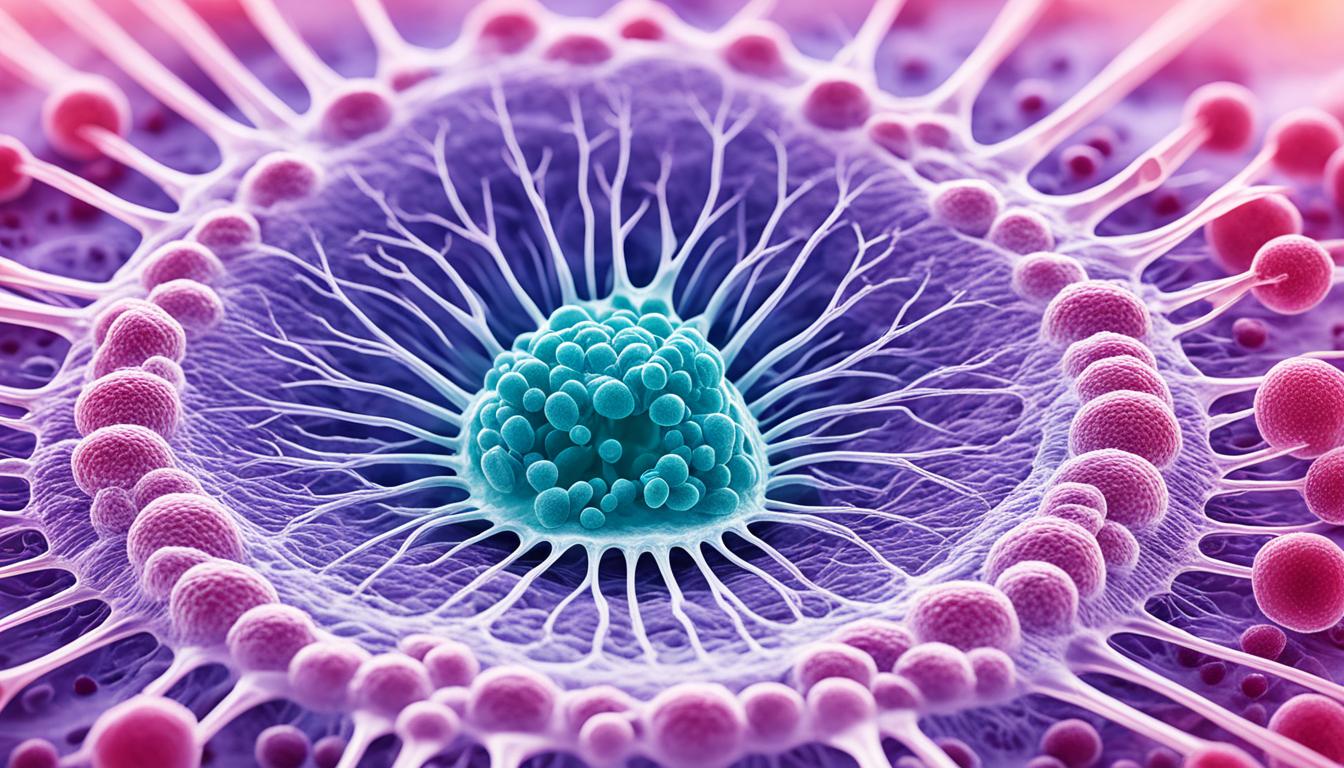Hemorrhoids, or Piles, are swollen veins in the anus and rectum. They can be inside or outside. Common causes include obesity, pregnancy, and a diet low in fiber. Other factors are chronic diarrhea or constipation, straining when using the bathroom, and lifting heavy objects.
Internal hemorrhoids can lead to bleeding during bowel movements. You might also see tissues bulging out of the anal area. External hemorrhoids can cause pain, bleed, and make the area around the anus swell.
Doctors diagnose hemorrhoids by checking the area with physical exams. They might also use a special tool to get a closer look. Treatments can range from medicines to surgery. Stem cell therapy is an option for some people.
Key Takeaways:
- Piles, also known as hemorrhoids, are swollen veins in the anus and rectum caused by various factors.
- Internal hemorrhoids can cause bleeding during bowel movements and the protrusion of tissues through the anal opening.
- External hemorrhoids may cause pain, bleeding, and swelling around the anus.
- Hemorrhoids can be diagnosed through physical examinations and tests such as anoscopy, proctoscopy, sigmoidoscope, or colonoscopy.
- Treatment options for piles include medications, hemorrhoid thrombectomy, surgery, and stem cell therapy.
Causes and Symptoms of Piles
Piles, or hemorrhoids, have many causes. Common ones are obesity, pregnancy, and a low-fiber diet. Also, chronic diarrhea or constipation, along with straining, and heavy lifting contribute.
Internal hemorrhoids are inside the rectum. They often cause bleeding and the protrusion of tissues during bowel movements.
External hemorrhoids happen around the rectum. They may lead to symptoms like pain, bleeding, and swelling.
Feeling pain, bleeding, or swelling could be signs of piles. If you notice these symptoms, seek medical help right away. This quick action can prevent problems and ease your discomfort.
Hemorrhoid Classification
| Hemorrhoid Type | Location | Symptoms |
|---|---|---|
| Internal Hemorrhoids | Inside the rectum | Bleeding during bowel movements, protrusion of tissues through the anal opening |
| External Hemorrhoids | Around the rectum | Pain, bleeding, swelling |
Treatment Options for Piles and Prevention
Dealing with piles has different treatments depending on how bad they are. Small hemorrhoids might get better on their own. But if the pain and discomfort don’t stop, you have options.
You can try creams or ointments from the store to ease pain and itchiness. They help by making swelling go down. For worse cases, a doctor might need to remove the hemorrhoid or do surgery.
There are also things you can do at home to feel better and stop piles from coming back. A diet rich in fiber makes your poop softer, which helps a lot. Soaking in warm water, drinking lots of fluids, and using ice packs can lessen the pain. Try not to sit too long or lift heavy things to prevent piles. These steps, along with a healthy life, are key to managing this condition well.
If you think you have piles, don’t wait to see a doctor. They can make sure you get the right kind of help. Talking with a healthcare provider will guide you on the best treatment for your situation.
FAQ
Q: What are the symptoms of piles?
A: Bleeding when you go to the bathroom and tissues coming out of your bottom are key signs of piles. You might feel pain and see swelling near your anus too.
Q: What causes piles?
A: Being overweight, pregnant, or eating a diet low in fiber can lead to piles. So can dealing with ongoing diarrhea or constipation, pushing hard when you poop, or lifting heavy things.
Q: How are piles diagnosed?
A: To find out if you have piles, a doctor will look at and feel your anus and rectum. They might also do tests like anoscopy, proctoscopy, or sigmoidoscopy.
Q: What are the different treatment options for piles?
A: How piles are treated depends on how bad they are. Treatments range from medicine and surgery to new options like stem cell therapy.
Q: Are there any home remedies for piles?
A: Don’t worry, there are things you can do at home. Eating foods that are rich in fiber, sitting in warm water, drinking lots of water, and using ice packs can all majorly help. It’s also important to avoid sitting for too long and heavy lifting.
Q: How can piles be prevented?
A: Living a healthy life is the best way to not get piles. This means eating a lot of fiber, drinking water, moving your body often, not pushing too hard when you poop, and not spending too much time sitting down.

